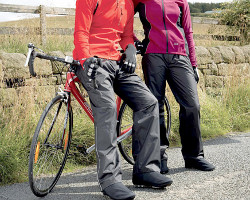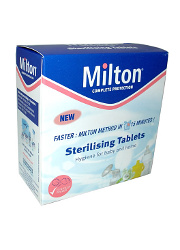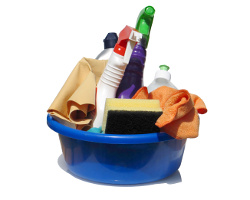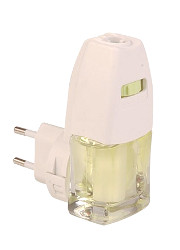We’ve had another email from friend of Recycle This, Petra:
I need your help again. I hope I can explain the topic well, because I’m not used to discuss garden items in English.
We have a Catalpa tree in our garden, which produces every year a lot of new branches. The year after, in March, you need to prune all these new
branches to make room for the new ones. My question is, what can I do with all these old branches. Of course I can burn them in the fireplace, but the wood grew fast and burns fast.
I was thinking about braiding a fence, like they do with willow branches, but I’ve no idea if Catalpa branches can be used for something like that. All other ideas are also welcome.
I hadn’t heard of a Catalpa tree so wondered if they are something that doesn’t grow in the UK – but apparently the oldest one in the world is in Reading so I’m not only wrong, I’ve been wrong for 150 years. Shows what I (don’t) know.
Apparently pioneer farmers in the US used Catalpa farmers to make “strong, lightweight rot-resistant fence posts” so I guess they could be used for some small structural purposes. I’m not sure whether it would be suitable for weaving like hazel or willow though – it might snap when it dries – anyone know?
It’s also supposed to be good for woodworking because it has an interesting grain – but I think you’d be limited on what you could make from year old wood (crochet hooks? sculptures of single strands of spaghetti?).
Any other suggestions for ways to use the wood?
Categories: garden, items
Posted by louisa
on 9 March 2011
 The wonderful Alice in Blogland sent me an email last week:
The wonderful Alice in Blogland sent me an email last week:
Thought of another recycle that I could use some help with!
I’ve taken some waterproof trousers, jackets and cycling gear from someone who didn’t want to just dump them in landfill. I thought there would be
loads of things I could make with them – my ideas so far are a pair of rainlegs, a pair of gaiters made from the bottom of some waterproof trousers, a rucksack cover like this, a waterproof bike saddle cover and maybe a waterproof hat.
Can anyone come up with any more ideas? And does anyone know how I can seal the seams for things which need to be really watertight?
I think we’ve talked about the watertight seam question before – but if anyone has any new suggestions, please do feel free to add them.
As for things to make out of them, if I still used my bike, I’d probably want a waterproof hat/helmet cover – with a peak at the front to protect my glasses a bit. I also like the idea of gaiters as my trousers always puddle-soak.
As it is though, I rarely have to leave the house in the rain so if the waterproofs were made from a neoprene type material, I’d probably use some of it, along with a bit of expanded polystyrene foam, to make a bath pillow – much more my speed now ;)
Other ideas?
Categories: clothes and fabric, hobbies, items, sports
Posted by louisa
on 7 March 2011
 We’ve covered a wide range of things during our cleaning themed week here on Recycle This – bleach bottles, plug-in air fresheners, making dishcloth & pot scrubbers, and yesterday’s very interesting discussion on reducing plastic waste from cleaning – so I feel it’s fine for me to go off on a bit more of a tangent for this last one: sterilising fluid.
We’ve covered a wide range of things during our cleaning themed week here on Recycle This – bleach bottles, plug-in air fresheners, making dishcloth & pot scrubbers, and yesterday’s very interesting discussion on reducing plastic waste from cleaning – so I feel it’s fine for me to go off on a bit more of a tangent for this last one: sterilising fluid.
When I’m making jams & preserves, I use the hot soapy water then time in the oven approach for “sterilising” my glass jars – but that doesn’t work for John’s homebrew stuff. Some of it is plastic, some of it is just too big for the oven, and some of it is both plastic and too big. Instead, he uses sterilising solution – either bought as a concentrated liquid or made up from tablets. The stuff John uses is 2% sodium hypochlorite – weak bleach – so maybe this isn’t off on such a tangent after all ;)
Anyway, when he’s doing some homebrew, John mixes up a big vat of the sterilising fluid and uses it to sterilise this things – but since they’re hot-water-clean already, the liquid doesn’t get too messed up. I’d imagine people sterilising babies bottles would be in a similar position. It apparently has an effective life of about 24 hours so we can reuse it for other things – but what?
According to this forum on MoneySavingExpert, it’s a good halfway house for bleach – you can use it as a safer bleach for cleaning places you wouldn’t want to use full strength bleach (the microwave, tea cups, camping water bottles).
Does anyone have any other suggestions for things to do with it? I know some people use a weak bleach solution for cleaning plant pots before sowing seeds/delicate seedlings in them – would this be suitable for that?
Categories: baby, bathroom, hobbies, household, items
Posted by louisa
on 4 March 2011
 This week, we’ve had a vaguely spring cleaning inspired week here on Recycle This and looked at a few cleaning related questions – so far, reusing/recycling bleach bottles, making homemade dishcloths/pot scrubbers, and reusing/recycling air fresheners. Today though, I’d like to hear your tips and suggestions for reducing waste from cleaning – for going plastic-free and aerosol-free.
This week, we’ve had a vaguely spring cleaning inspired week here on Recycle This and looked at a few cleaning related questions – so far, reusing/recycling bleach bottles, making homemade dishcloths/pot scrubbers, and reusing/recycling air fresheners. Today though, I’d like to hear your tips and suggestions for reducing waste from cleaning – for going plastic-free and aerosol-free.
Plastics seem to be a core part of modern cleaning products now – from the cleaning solution bottles to the sponges, the film the sponges are wrapped in, many mop buckets and dustpans and brush sets. The latter things may last a while but the former are likely to end up in the bin very soon. Some bottles can be recycled but the sponges and any film-type packaging can’t be. Even more traditional eco-friendly cleaning solutions such as vinegar often come in plastic bottles these days (or at least they do if you bulk buy them).
Similarly, plastic pump-action spray bottles have replaced some cleaning product aerosols but they’re still very common for polishes & foaming sprays (such as oven cleaner) — and aerosol recycling is not exactly common. (They can be recycled and some areas do collect them kerbside, but most don’t.)
Have you made any efforts to reduce the amount of plastic waste generated due to cleaning? Have you swap to different products to reduce plastic packaging waste? We’ve talked about making dishcloths/scrubbers – but any other suggestions for reducing the use of plastic sponges?
And what about aerosols? Have you got any advice for moving away from them?
Categories: bathroom, household, reduce this
Posted by louisa
on 3 March 2011
 Following on in our vaguely spring-cleaning inspired cleaning week here on Recycle This, I received this email from Helen:
Following on in our vaguely spring-cleaning inspired cleaning week here on Recycle This, I received this email from Helen:
How do I recycle plug in air freshener? My daughter has been diagnosed with allergies and they’ve recommended no air fresheners now. I’ve got four to get rid of.
We’ve not used them so I’m basing my advice on reading/looking at pictures rather than hands on experience but I think they’ll be classed as electronic waste – they seem to be a plug with a small heating/vaporising/expressing element, which I’m presuming is some sort of electronics. If that’s the case (and someone please correct me if I’m wrong), then they should be recycled along with other WEEE waste, wherever it’s collected near you (usually the local tip/household waste centre).
It would be better to reuse it before sending it for recycling though – perhaps try passing them along to someone who might still use them (they could be Freecycled if no one in your family/friends circle wants them).
And while we’re on the topic, I know the point is to buy refills for them but can they be refilled at home instead – with essential oils or whatnot? Anyone got any suggestions on how to do that? Possibly still not a solution for Helen but it may save some waste for other people.
Any other recycling advice or reusing ideas?
Categories: bathroom, household, items
Posted by louisa
on 2 March 2011



 The wonderful
The wonderful  We’ve covered a wide range of things during our cleaning themed week here on Recycle This –
We’ve covered a wide range of things during our cleaning themed week here on Recycle This –  This week, we’ve had a vaguely spring cleaning inspired week here on Recycle This and looked at a few cleaning related questions – so far,
This week, we’ve had a vaguely spring cleaning inspired week here on Recycle This and looked at a few cleaning related questions – so far,  Following on in our vaguely spring-cleaning inspired
Following on in our vaguely spring-cleaning inspired 














